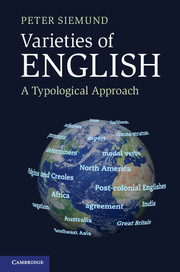Book contents
- Frontmatter
- Contents
- List of figures
- List of tables
- Acknowledgements
- How to use this book
- Abbreviations
- 1 Introduction
- 2 Reflexivity and reflexive marking
- 3 Pronominal gender
- 4 Pronominal case
- 5 Determiners
- 6 Tense marking
- 7 Aspect marking
- 8 Modal verbs
- 9 Negation
- 10 Subject-verb agreement
- 11 Ditransitive constructions
- 12 Interrogative constructions
- 13 The formation of relative clauses
- 14 Summary and outlook
- General references
- Index of languages, varieties, and areas
- Index of names
- Subject index
- References
12 - Interrogative constructions
Published online by Cambridge University Press: 05 May 2013
- Frontmatter
- Contents
- List of figures
- List of tables
- Acknowledgements
- How to use this book
- Abbreviations
- 1 Introduction
- 2 Reflexivity and reflexive marking
- 3 Pronominal gender
- 4 Pronominal case
- 5 Determiners
- 6 Tense marking
- 7 Aspect marking
- 8 Modal verbs
- 9 Negation
- 10 Subject-verb agreement
- 11 Ditransitive constructions
- 12 Interrogative constructions
- 13 The formation of relative clauses
- 14 Summary and outlook
- General references
- Index of languages, varieties, and areas
- Index of names
- Subject index
- References
Summary
We can distinguish four major clause types in English: declaratives, interrogatives, imperatives, and exclamatives. We identify them primarily on the basis of their word order, as I will show below. The focus of this chapter lies on interrogatives, but it will be useful to introduce some background information on clause types and their associated functions. This will be done in Section 12.1. Interrogatives in varieties of English primarily differ from the corresponding standard specimens in terms of word order, both in main and embedded interrogative clauses. We will investigate these differences in Section 12.2. A cross-linguistic comparison of interrogatives that places standard and vernacular constructions of English in this domain into a larger picture will round off this chapter (Section 12.3).
Overview
Interrogative clauses as a grammatical phenomenon belong to the system of sentence types. We understand sentence types as the systematic pairing of the formal properties of a clause with some illocutionary function (see König and Siemund 2007). Let us first of all try to make clear what this means.
Illocutionary force and sentence types
In uttering a sentence, speakers can perform various communicative acts, such as making a statement, asking a question, issuing a command, or expressing surprise about an unexpected state of affairs. They may also want to apologise, promise something, or accuse or criticise somebody. There is scarcely a limit to the set of imaginable communicative acts, and speakers are likely to find extremely nuanced ways to express them.
Information
- Type
- Chapter
- Information
- Varieties of EnglishA Typological Approach, pp. 237 - 257Publisher: Cambridge University PressPrint publication year: 2013
